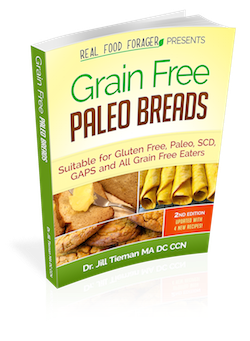Yogurt is so easy to make at home that it is crazy to spend money on store bought yogurt. At home, you can control exactly what goes into it — and what stays out of it — like additives such as carregeenan, guar gum, sugars, etc. Why would you want to spend good money on junk? You can use the very best milk available and make a nutrient dense food that can be used in many versatile ways. Making yogurt at home is dirt cheap and much easier than you think. I’ll tell you how.
The most important aspect in making yogurt is deciding on which milk to use. The very best choice would be fresh, unpasteurized milk from grassfed cows. If that is not available, the second best choice would be whole fat, organic milk from grassfed cows, that is unhomogenized. I was able to find this milk at a healthfood supermaket like Whole Foods. The milk from grassfed cows has a much better nutrient profile because the cows are eating the food they are supposed to eat. Cows have four stomachs and are able to turn grass and forage into excellent protein, fat, vitamins and minerals which then goes into the milk. Organic is best.
Homogenization was invented to fool consumers and benefit the milk companies back in the 1950’s. At this time, milk was being delivered to the doorstep in glass jars and the cream would float to the top. Consumers could judge the quality of the milk by how much cream was there. Manufacturers saw that if they could spread the cream throughout the milk, no one could see the layer of cream so they wouldn’t know that less cream was being kept in the milk. The manufacturers then skimmed the cream off the top and sold it separately, reaping a nice profit!
Homogenization breaks up the fat into tiny miceles which mixes into the water component of milk more easily. This is thought to be detrimental because the unnaturally tiny particles of fat can get into the blood vessels and collect there. As far as I am concerned, the less processing done to the milk the better.
People on the SCD or GAPS diet may have yogurt, however it needs to be cultured for 24 hours as this length of time will ferment out the lactose in the milk. Those friendly bacteria love milk sugar and given enough time, they will eat it all up. I love the 24 hour yogurt as it has no sugars and it is still very creamy and delicious. If it is too tart, you can always add some fruit or a little honey.
Homemade Yogurt (SCD/GAPS)
Ingredients
1/2 gallon milk
culture starter or 1/4 cup plain full fat commercial yogurt (where to buy culture starter)
Equipment
Yogurt maker or cooler and towel
2 glass quart jars
candy thermometer
Instructions
- Decide which milk you are going to use
- Raw milk is best but if you cannot get it or are uncomfortable with it, try to get organic, grassfed, full fat unhomogenized milk
- Pour this milk into a clean pot and bring to 180 degrees F (this step is to kill any bacteria in the milk that may interfere with the yogurt cultures)
- Quickly remove it from the heat when it reaches 180
- Cool in a sink with 2″ cold water or let cool naturally
- Cool to between 95 degrees and 105 degrees (you must cool the milk before adding the culture starter — too hot and the bacteria will die)
- Pour one cup cooled milk into a separate glass cup and the rest into the large glass jar from the yogurt maker
- Add the starter to this milk and mix well
- Add the cup of milk to the larger jar and mix well
- Cover and put into the yogurt maker (with water in the bottom)
- If you are brewing for 24 hours use the dimmer switch on the yogurt maker as this will moderate the temperature so that it does not get too hot (see video)
- If you are brewing for 8 hours you do not need the dimmer
- Take note when the yogurt will be done and remove it from the yogurt maker at that time
- Put into two glass one quart jars and refrigerate
Where to buy the Yogourmet Yogurt Maker
Where to buy Culture Starter













